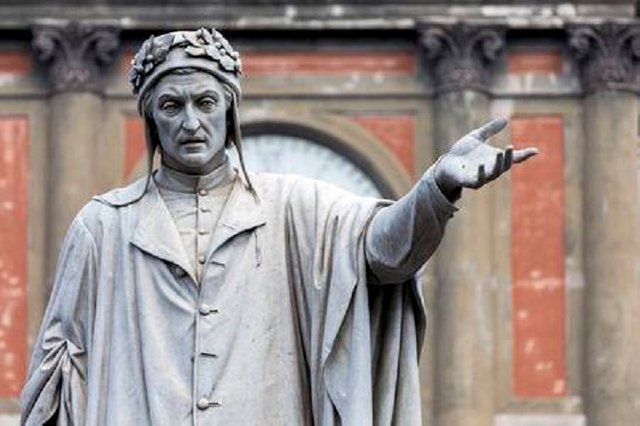Dante Alighieri and his not so famous works /part 3/
Dante fully shares the medieval notion of the poetic work as a combination of four meanings. The first is called literal. This meaning does not extend beyond the literal meaning of the words used - for example the poet's inventions. The second is called allegorical. He is standing under the cover of these inventions, and appears to be true, hidden under a beautiful lie ... The third sense is called moral. This is the meaning that readers must scrutinize in the scriptures in order to benefit from them for themselves and their disciples ... The fourth meaning is called anag- gogically, elevating to the Heavenly Reason or linking the work with the wisdom of the Scriptures. He is the invincible bearer of truth, set in the literal sense, and in the above-mentioned Scripture, in which he finds the highest Truths, who are empowered with eternal Glory.
Here, Dante takes a closer look at the difference in meaning that gives poets and theologians allegory. According to Thomas Aquinas, the metaphorical meaning refers entirely to the literary plan, and only man's literal meaning is admitted. In Chapter XXV of "New Life," Dante gives rational power to the allegorical sense. He claims that in some cases poets communicate with inanimate subjects as if they are endowed with reason and feelings. Dante respects this approach taken by the poets, provided they are always guided by reason and enable to clarify the meaning of the prose. In addition, he defends the choice of poets to write in a native language that is rich enough to express messages of varied meaning. Medieval theological hermeneutics is a way of communicating with God's word and with the Holy Scripture. In fact, the literal meaning of the text is represented in Christian theology and theological hermeneutics in a painfully contradictory way and with an effort to stay as much as possible on a secondary level, as something of the least importance, which can be said to be as burly as the material world. And for Dante, the literal meaning in itself contains the highest degree of untruth. From the point of view of medieval hermeneutics, the literal meaning does not have a greater weight than the inventions the poets create in their fables. The second meaning contained in the Scriptures is allegorical. Here, Dante has already transformed the medieval hermeneutic canon and, in particular, made a significant deviation from the viewpoint of Thomas Aquinas. Dante says the allegorical meaning is "hiding under the cover" of poetic fables and is "truth hidden under a beautiful lie. The third, higher, sense is the moral, which in medieval hermeneutics is called tropologically. This meaning contains various moral impulses, prescriptions and useful lessons.
The fourth meaning, the anagonal, is a kind of super-meaning. He is embedded in the Scriptures and is filled with God's guidance. Through it the connection of the poetic work with the non-permanent moral values is realized. To rise to the anagonal sense, one has to go from the literal sense that precedes everyone else. To justify the order of interpretation, Dante refers to Aristotle's thesis of the indissoluble connection of the inner with the external, of the matter with the form. It is the strict sequence in the cognitive process explained in Aristotle's "Physics" - a movement from what is satisfactorily known to the lesser-known. In the following comments constituting the contents of the second part of the Feast, he autographed his idea of the order of the heavens in the universe, the hierarchy of the angelic communities and of the immortality of souls. From chapter 12, after recalling Beatrice's conquest and consolation his readings of the treatises of Boetian and Cassiodor, the poet reads the difficulties he has encountered in studying philosophy for 30 months. When exposing the heavens to the universe, Dante follows his Master (Aristotle) when he defends as irrefutable the truth that "our earth is motionless, does not rotate, and with the seas is the center of the starry sky." The author of "Feast" states that the first sky is the sky of the moon, the second sky - Mercury, the third - the sky of Venus, the fourth - the sky of the sun, the fifth - the sky of Mars, the sixth - the sky of Jupiter, the seventh - , Eighth - Starry Sky, Nine - Crystal Heaven. Beyond the limits of all these heavens, says Dante, the Catholics have one more sky, the Empire, or else the Emitting Light, and say that it is motionless ... According to the Holy Church, which never lies, this soul inhabits the souls of the people Bliss.

You have recieved a free upvote from minnowpond, Send 0.1 -> 10 SBD with your post url as the memo to recieve an upvote from up to 100 accounts!
good